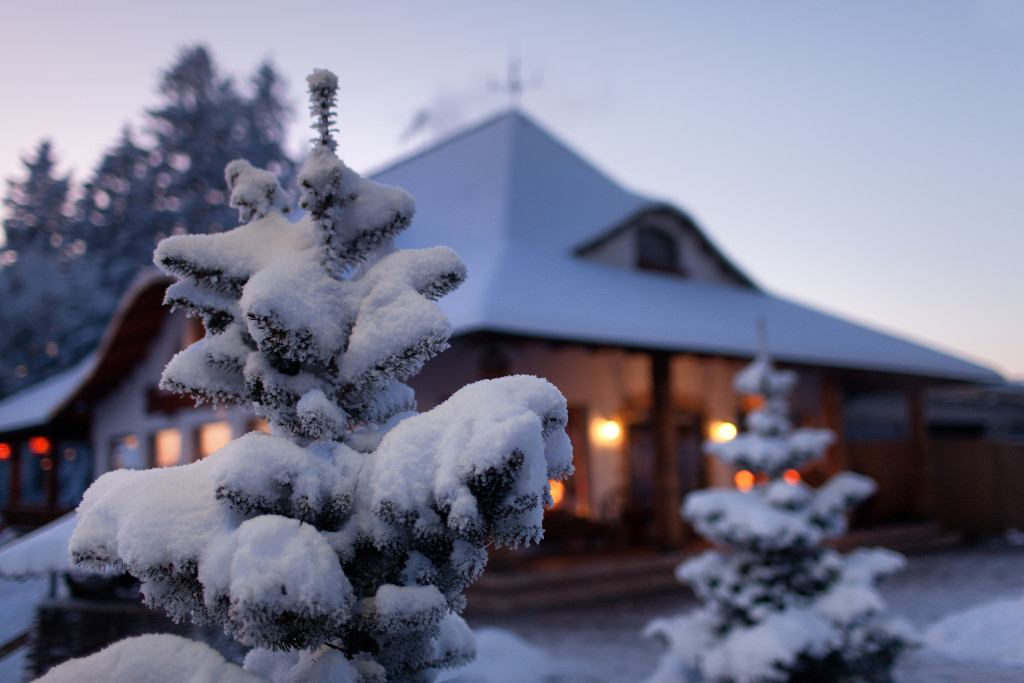- Winterizing your home involves sealing windows and doors, checking the roof, and properly insulating the house.
- Regular maintenance and inspection of the heating system ensure safety and comfort during winter.
- Installing a smart thermostat can optimize energy efficiency and control home temperature settings.
- Cleaning gutters and trimming trees minimizes potential damage to your home during winter storms.
- Keep an eye on the weather forecast and plan your winterizing tasks accordingly.
Winter is just around the corner, and it is the time to prepare your home for the chilly days ahead. While the snowfall and beautiful winter vistas are enchanting, the plummeting temperatures can take a toll on your house, affecting your comfort and energy bills.
Winterizing your home can help keep you warm and cozy and save money. Here are some tips on winterizing your home for a comfortable and cost-effective season.

Seal Windows and Doors
One of the easiest and most cost-effective ways to keep winter drafts at bay is sealing your windows and doors. Inspect the caulking around your window frames and doors for cracks or gaps. If you find any wear and tear, consider sealing them with the appropriate weather-resistant sealant. You can also improve the efficiency of your windows by covering them with plastic to minimize drafts.
Check the Roof
A well-maintained roof can protect your home from the harsh winter weather. Inspect your roof for leaks, missing or damaged shingles, and signs of wear and tear. If you notice any issues, address them immediately to prevent further damage during winter storms. If the roof or shingles are damaged, you should work with a reputable roofer to fix it. The roofing professional should have the tools and experience to complete the job safely and efficiently.
Insulate Your Home
Proper insulation can help curb heat loss, minimize drafts, and save money on energy bills. Focus on insulating the attic, the walls, and the basement to reduce heat transfer. It can involve anything from adding fiberglass batts to adding rigid foam boards or insulating the crawl space. A well-insulated home means a cozier and more energy-efficient home.
Insulating Your Attic
The attic is often the easiest place to add insulation because it usually has easy access and enough space to work. The recommended level of insulation for most attics is R-38, which translates to 10 to 14 inches of fiberglass or cellulose insulation. If you have less than eight inches of existing insulation, add more to reach the recommended level.
Seal Leaks
In addition to adding insulation, seal any air leaks in the attic. These can be found around vents, pipes, ducts, and chimneys. Air sealing your attic will improve energy efficiency, prevent moisture problems, and keep out pests.
Check Your Heating System
The heating system is the backbone of your home during winter. Before the first freeze, ensure your heating system is well maintained, cleaned, and inspected by a professional. Change the filters regularly and replace any worn-out parts. A properly maintained heating system will keep your home cozy, prevent increased energy bills, and prevent unexpected breakdowns.
Regular Maintenance
Regular maintenance of your heating system is also crucial for ensuring the safety of your home. A malfunctioning or neglected heating system can potentially lead to carbon monoxide leaks, electrical hazards, and fire accidents. Therefore, scheduling a professional inspection and tune-up at least once a year is essential.
Install a Smart Thermostat
Installing a smart thermostat is an excellent investment in an energy-efficient home. Your smart thermostat controls the temperature in your home, even when you are away. It can regulate the temperature to optimize comfort and energy efficiency.
Set the Temperature
With a smart thermostat, you can also set the temperature at different times of the day, lowering the heat when nobody is home. This will save you money on your energy bill and help the environment by reducing unnecessary energy consumption. You can even control the temperature remotely through your smartphone, so you never have to come home to a cold house again.

Clear Gutters and Trim Trees
Clogged gutters can cause water to back up, freeze, and damage your roof or walls. Before winter, clean your gutters to prevent ice dams and water build-up. Trimming trees near your home will minimize the chances of branches falling on your roof during winter storms. Preparing your home for winter is always a good idea by keeping your gutters clear and trees trimmed.
Clean Regularly
You should clean the gutters at least two times a year. You should clean them in spring and in fall. However, if you have a lot of trees near your home, it may be necessary to clean them more frequently. When cleaning your gutters, remove any debris, such as leaves and twigs, with a scoop or trowel. Then, use a hose to flush out any remaining dirt and grime. Make sure all downspouts are clear of debris as well.
Winterizing your home is essential to keep you warm, safe, and cost-effective during the winter season. Ensure to seal any drafts, insulate your home, check your heating system, install a smart thermostat, and clear your gutters before the first freeze. Stay warm, stay safe, and have a great winter season.

